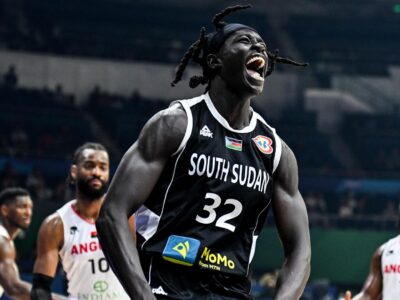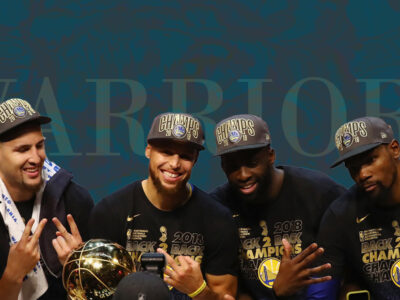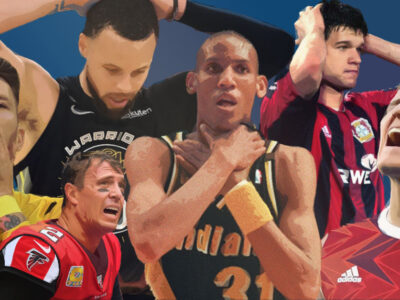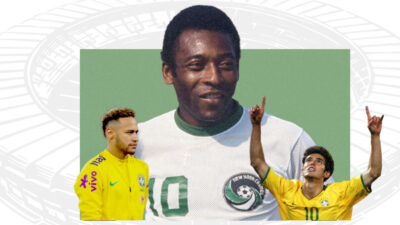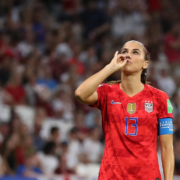Explosiveness is one of the biggest assets you need as an athlete, especially in high-tempo contact sports like basketball.
But with that explosiveness comes a significant risk of injuries. One badly timed jump or awkward landing can derail the trajectory of your entire career.
This is exactly what happened to Chicago Bulls legend Derrick Rose.
From his meteoric rise to the NBA to his struggles with injuries and his eventual resurgence, Derrick Rose’s career featured a series of highs and lows.
Despite the turbulent journey, Derrick Rose’s resilience shone through, inspiring the Chicago faithful and basketball fans worldwide.
It all started in Englewood.
Growing Up in Chicago
Derrick Rose (fondly known as “D-Rose”) grew up in Chicago’s Englewood neighborhood, where life constantly tested his focus and resolve.
In a community where distractions were plenty and opportunities rare, he kept his eyes on something bigger—turning his talent into something fruitful.
Derrick Rose lived in a two-bedroom apartment on the South Side with his mom and three older brothers, who were all former basketball players.
Chicago in the 1980s and ’90s offered little relief for young black boys trying to stay on the right path. The only saving grace was a high-flying young man named Michael Jordan.
The Rose family knew this reality intimately. Although not deeply detailed in public records, rumors and reports hinted at the family’s proximity to gangs, a shadow that loomed large over many Englewood households.
He remained untouched by direct gang involvement, but the threat lingered in every alley and late-night knock.
Rose’s athletic gifts emerged early, and his family, aware of their rarity, shielded him from distractions.
His mother, Brenda, enforced a strict routine: school, then practice. No lingering on corners, no idle time. That discipline, stitched into survival, became Rose’s foundation.
I could see that behind every win and triumph was a kid who outran bullets, poverty, and the quiet grief of a neighborhood that claimed too many innocent lives.
High School Stardom
From the moment he stepped onto the court as a sophomore at the Simeon Career Academy, it was evident that he set out to prove a point. Spurred by the tragic demise of teenage sensation Ben Wilson, Rose honored his legacy by wearing his No. 25 jersey.
He led Simeon Career to back-to-back state championships, the first Chicago Public League team to do so in Class AA history.
With a rare blend of speed, vision, and guile, he dictated play like a veteran, wiggling through defenses and setting up teammates in a sublime manner.
Derrick Rose’s performances drew national attention, gaining him more admirers and college suitors. He was on the right path to greatness, and his next destination was college basketball.
Playing College Ball for Memphis
At the University of Memphis, Derrick Rose needed only one season to leave an imprint that still lingers.
As a freshman under head coach John Calipari, Rose stepped into the spotlight with the calmness of a seasoned pro.
The NCAA “one-and-done” rule, requiring players to be one year removed from high school and at least 19 years old before entering the NBA Draft, brought him to college basketball for a brief but electrifying stay. He made every moment count.
Rose adapted quickly, leading the Memphis Tigers to a school-record 38 wins and powering them to the national championship game in 2008.
With each game, he showcased his ability and dictated tempo like few freshmen ever had.
His backcourt partnership with Chris Douglas-Roberts gave Memphis a lethal edge, while Rose’s poise under pressure kept them marching toward history.
In the title game against Kansas, Rose nearly delivered a championship, but late missed free throws and a buzzer-beating three forced overtime.
Memphis fell short, but Rose’s impact was unquestionable. He finished the season averaging 14.9 points and 4.7 assists and then declared for the NBA Draft.
NBA Draft and Meteoric Rise
When the Chicago Bulls selected Derrick Rose with the No. 1 overall pick in the 2008 NBA Draft, they weren’t just picking a point guard — they were reclaiming a city’s hope.
D-Rose, a hometown prodigy, headlined a star-studded draft class that included Russell Westbrook, Kevin Love, and Brook Lopez. But it was Rose, quiet yet fearless, who immediately seized the stage.
In his rookie season, he averaged 16.8 points and 6.3 assists, earned Rookie of the Year honors, and led the Bulls back to the playoffs.
His performances throughout his rookie season instantly made him the fan favorite and cornerstone for a franchise rebuild.
The 2009 first-round clash against the defending champion Boston Celtics set up a thrilling matchup and an instant classic.
Rose dropped 36 points in his playoff debut, tying Kareem Abdul-Jabbar’s record for most by a rookie in a postseason opener. The seven-game series, filled with overtime battles, introduced Rose’s resilience to a national audience.
Derrick Rose's NBA Playoff debut! (2009)
— ThrowbackHoops (@ThrowbackHoops) April 15, 2025
36 PTS
11 AST
4 REB
1 STL
63% FG (12/19)
100% FT (12/12) pic.twitter.com/86Z9A9ZMna
By 2011, he became the youngest MVP in NBA history at just 22, averaging 25 points and 7.7 assists while carrying a revamped Bulls team to the league’s best record.
He cemented his place among the game’s brightest stars three times, earning All-Star selections from 2010 to 2012.
Derrick Rose wanted no part of the dancing during the Eastern Conference All-Star introductions back in 2012😂pic.twitter.com/2hCed9lUhh
— Ballislife.com (@Ballislife) April 18, 2020
His aggression, control, and ruthless will drew inevitable comparisons to Michael Jordan – an unfair but unavoidable weight of being a hot basketball prospect in Chicago.
It was not far-fetched to see how such a comparison could be detrimental and mount unsolicited pressure on an emerging star.
Still, Rose embraced it. He didn’t flinch at expectations; he chased them.
Fans and pundits spoke openly of a new Bulls dynasty, one built not on past glory but on Rose’s present fire and killer mindset. Chicago believed again, and so did I.
How Derrick Rose Dominated the League
Derrick Rose attacked the game with a ferocity few could match.
He slashed through lanes like a sprinter breaking tape, rose through contact with an elegance that defied physics, and finished at the rim with a mix of finesse and fury.
Anyone who watched him play often wondered how such a player could be stopped or locked out. He played every minute of each game with the same intensity and vigour.
But sadly, that very fearlessness carried a cost.
Rose’s relentless style demanded everything from his body, and over time, his body fought back.
He absorbed contact on several occasions, often landing awkwardly after explosive leaps. His knees paid the toll of his brilliance.
The torque he generated on cuts and drives, while thrilling to witness, pushed his ligaments past their limits.
He never played cautiously, and in a league built on longevity, Rose played like every possession mattered more than the next. That commitment ignited arenas and lifted teams, but it also became the tragic edge of his greatness.
The Injury That Changed Everything
In the first round of the NBA Playoffs against the Philadelphia 76ers on April 28, 2012, tragedy struck.
With just over a minute left, the Bulls held a comfortable lead. Rose drove hard into the lane, planted awkwardly, and collapsed. He grabbed his knee, wincing. The crowd stood frozen.
One play, one misstep—and everything changed.
Watching him collapse in the final minutes of a playoff game after leading the Bulls to the league’s best record felt like watching someone drop a priceless heirloom, knowing full well it would shatter before it even hit the ground.
The reaction was immediate. Fans held their breath. Teammates covered their faces. Broadcasters lowered their voices like someone had just died.
It wasn’t just Chicago that mourned—it was the entire basketball world.
A lot of people still look back at that moment and wholeheartedly wish such an event hadn’t happened because of the aftermath.
Rose had become more than a star; he was a cult hero and the city’s pride. And in one misstep, it all unraveled.
For perspective, think back to Gordon Hayward’s gruesome ankle injury during his Celtics debut in 2017, which generated the same shockwave that rippled through the league in 2012 when Rose went down.
But with Rose, it was deeper. He had just signed a long-term deal. He was 23. The Bulls were contenders. And then suddenly, they weren’t.
We all knew torn ligaments could heal. But something about the way Rose clutched his knee, the way the United Center fell silent, made it clear: this wasn’t just an injury.
And it was indeed not just an injury; it was the start of his downward trajectory. His body never seemed to get back to full fitness, and this affected his performance on the court.
Becoming a Journeyman
Rose’s post-Chicago journey never mirrored the meteoric rise of his early years, but it carved out something more profound. After the injuries, the surgeries, and the doubters, he refused to fade.
He landed with the Knicks, then briefly with the Cavaliers, showing flashes of the old burst but struggling to find rhythm in constantly shifting roles. Still, he never pouted. He adjusted.
It was in Minnesota where Rose delivered a moment that felt like redemption. On Halloween night in 2018, he erupted for 50 points against the Utah Jazz.
He cried in the postgame interview. We all did. It wasn’t that he had turned back the clock, but because he reminded us who he still was—a flashback to the rose that never fully blossomed.
In Detroit and later Memphis, Rose evolved. No longer the franchise cornerstone, he embraced the role of veteran sage and roleplayer.
Young players looked up to him, drawn by the authenticity in his voice and the wisdom earned from scars. He mentored with patience, led by example, and carried himself without ego.
It wasn’t the kind of scenario he would have envisioned for himself at that point in his career. Still, circumstances led him to that point, and he faced every minute of this phase with commendable professionalism and unmistakable stoicism.
Rose never asked to be the face of perseverance. But across five teams and countless doubters, he wore that identity like a badge.
Missing Out on the Ultimate Prize
Derrick Rose never touched the Larry O’Brien trophy, and for fans who followed his rise, that truth still stings. Fate never gave him a clean shot.
His best postseason run came in 2011 when he led the Bulls to the Eastern Conference Finals. That team had grit, defense, and a 22-year-old MVP who believed he could carry Chicago all the way.
But standing in the way were the “Heatles” of LeBron James, Dwayne Wade, and Chris Bosh.
The Bulls won Game 1, then lost four straight. Rose had moments, but the Heat had depth, size, and overwhelming firepower.
Frankly, very few people expected the Bulls to triumph over the Heat, but the Rose-anchored Bulls had a favorable chance of progressing to the next round.
The following year, everything fell apart with one injury. And from there, each season became a question of “what could have been”.
His body never gave him the consistency needed to chase a ring. Teams changed, roles shifted, and time kept moving.
He played meaningful minutes in New York, Detroit, and Minnesota but never deep into May or June again.
For all his highlights and comebacks, that championship void shadows Rose’s legacy. It doesn’t define him, but it lingers.
He gave everything—his passion, his knees, his pride, and his tears—but the ultimate prize stayed just out of reach.
For fans, it’s like watching a beautiful story without a blissful ending. For Rose, it’s the cost of brilliance cut short.
Legacy and Impact
When you stack Derrick Rose’s career next to other No. 1 overall picks — LeBron James, Tim Duncan, Shaquille O’Neal — it is hard not to pause.
Not out of inferiority to the legends above, but because he deserves to be in such elite company, in spite of the adversities he faced early on in his career.
Early on, comparisons to Allen Iverson felt inevitable. Like AI, Rose had that Philly-style fearlessness.
And now, when you watch Ja Morant explode off the dribble or see De’Aaron Fox sprint coast-to-coast, you see shades of Derrick – moments that make you gasp in awe and whisper, that’s vintage D-Rose.
In Chicago, he’s more than a player. He’s folklore. A kid from Englewood who made it then made us believe again.
When he announced his retirement, it hit differently, signaling the end of a dramatic career.
BREAKING: Derrick Rose has announced that after 15 NBA seasons, he is retiring from basketball. 🌹 pic.twitter.com/5EB9ctZ64n
— Bleacher Report (@BleacherReport) September 26, 2024
Inasmuch as it was a moment begging to unfold, it still felt that way because it closed the book on the biggest “what if” in recent NBA memory.
To fans, Derrick Rose represents something more powerful than stats or trophies; he embodies resilience.
Even as injuries stacked up, brands didn’t walk away. His commercials, especially the “all in for D Rose” Adidas campaign, captured his quiet fire and reminded us that redemption isn’t about reclaiming the past but surviving the present.
In later years, Rose didn’t just open up about his body; he opened up about his mind.
He spoke honestly about depression, doubt, and fear. In a league full of noise, he stayed honest.
To us, Derrick Rose is proof that grace doesn’t only come in a win. It can come in how you lose, stand back up, and keep moving.
Who wrote this?
Bienuoma Agaga-Akpati is a software engineer, writer, eSports player, and sports enthusiast, presently working with a group of ambitious Africans to transform the writing industry. With good knowledge of various sports and eSports, coupled with his keen ability for research, he loves analyzing ideas and topics that fosters the growth of the sport and eSports scenes. In his spare time, he enjoys creating content and engaging in discussions across various platforms.










